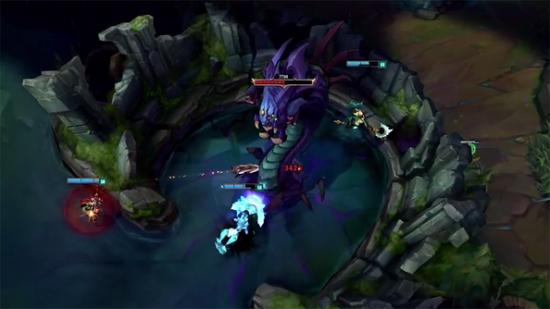The Summoner’s Rift sees most of what goes on in the lanes in League of Legends. So how does one go about updating such a crucial map? Subtly, but decisively, it turns out.
“We want Summoner’s Rift to be the place we play together for years to come,” say Riot. “For this update, we’ve chosen a handcrafted art style that we think will grow and evolve over time, just like the rest of the game.”
In short, Riot’s plan is to make absolutely everything more readable – something LoL has always been better at than some of its peers, and now will be better still.
Riot have redesigned the Rift with a hierarchy of visibility in mind: you should notice the UI first, then visual effects like spells, then champions, minions and monsters – and last of all the environment.
That’s meant muting the Rift’s appearance, through control of colour, saturation and level of detail, to ensure it never gets in the way of what’s really important. Riot have reduced clutter around walls, for instance, to make crucial moves easier to plan.
Your location within the map will be easier to parse at a glance, too – either by quadrant (the four quarters of the map are now separated by visual style) or proximity to its centre (the closer you get to Baron Nashor, the more dilapidated the scenery).
Most impressive is the way monsters now communicate their abilities through their idle animations. Baron and the Dragon, meanwhile, fire off newly-styled abilities that reflect their status as the most powerful beasties on the map.
There’s still “months of effort” ahead – but Riot expect that players on low-end machines won’t take a performance hit for the new changes. Does excitement for all this outweigh the fear of the new?
